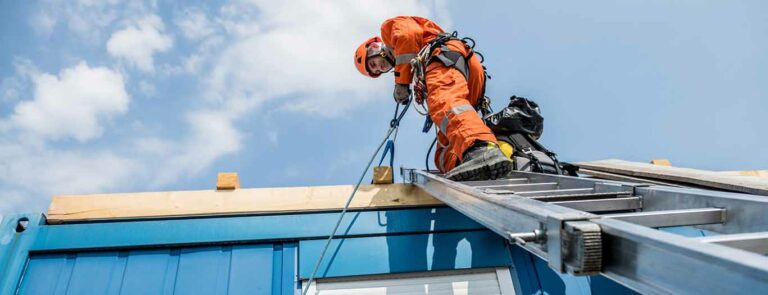Roar Solutions Things To Know Before You Get This
Roar Solutions Things To Know Before You Get This
Blog Article
Roar Solutions for Dummies
Table of ContentsNot known Details About Roar Solutions Things about Roar SolutionsThe 30-Second Trick For Roar Solutions
In such an environment a fire or explosion is feasible when three standard problems are fulfilled. This is typically described as the "unsafe location" or "burning" triangular. In order to secure setups from a prospective surge a method of analysing and identifying a possibly harmful area is called for. The objective of this is to make certain the correct choice and installation of tools to eventually protect against a surge and to make sure safety of life.
(https://www.cheaperseeker.com/u/roarsolutions)
No equipment should be mounted where the surface area temperature of the devices is higher than the ignition temperature level of the given danger. Below are some common dust dangerous and their minimal ignition temperature level. Coal Dirt 380C 225C Polythene 420C (thaws) Methyl Cellulose 420C 320C Starch 460C 435C Flour 490C 340C Sugar 490C 460C Grain Dust 510C 300C Phenolic Resin 530C > 450C Aluminium 590C > 450C PVC 700C > 450C Soot 810C 570C The likelihood of the threat existing in a concentration high enough to trigger an ignition will differ from place to place.
In order to classify this risk a setup is split into areas of threat depending upon the quantity of time the dangerous is present. These areas are referred to as Areas. For gases and vapours and dusts and fibers there are three areas. Zone 0 Zone 20 A harmful environment is highly likely to be existing and might exist for long durations of time (> 1000 hours annually) or perhaps continually Zone 1 Zone 21 A harmful atmosphere is feasible yet unlikely to be present for extended periods of time (> 10 450 C [842 F] A classification of T6 implies the minimal ignition temperature level is > 85 C [185 F] Unsafe area electrical equipment possibly created for use in higher ambient temperature levels. This would showed on the rating plate e.g. EExe II C T3 Ta + 60C( This implies at 60C ambient T3 will certainly not be surpassed) T1 T1, T2, T3, T4, T5, T6 T2 T2, T3, T4, T5, T6 T3 T3, T4, T5, T6 T4 T4, T5, T6 T5 T5, T6 T6 T6 A T Class score of T1 implies the optimum surface temperature produced by the tool at 40 C is 450 C. Presuming the associated T Class and Temperature ranking for the devices are ideal for the location, you can always use a tool with an extra strict Department ranking than required for the location. There isn't a clear solution to this question. It really does depend on the kind of devices and what repair work require to be performed. Tools with details test treatments that can not be performed in the area in order to achieve/maintain third party ranking. Have to come back to the manufacturing facility if it is prior to the tools's service. Area Fixing By Authorised Personnel: Complex screening may not be required however certain treatments may need to be complied with in order for the devices to maintain its 3rd party score. Authorized employees should be employed to carry out the job correctly Repair service have to be a like for like substitute. New element must be thought about as a direct replacement requiring no unique testing of the tools after the repair service is full. Each item of equipment with an unsafe score must be examined individually. These are laid out at a high degree below, however, for even more in-depth details, please refer directly to the standards.
The Basic Principles Of Roar Solutions
The equipment register is a comprehensive data source of equipment documents that consists of a minimum set of fields to recognize each product's place, technological criteria, Ex category, age, and environmental data. The proportion of In-depth to Shut inspections will be figured out by the Equipment Threat, which is analyzed based on ignition threat (the chance of a resource of ignition versus the likelihood of a flammable environment )and the harmful location category
( Zone 0Area 1, or 2). Implementing a durable Risk-Based Evaluation( RBI )approach is critical for making certain compliance and security in handling Electrical Devices in Hazardous Areas( EEHA).
Roar Solutions for Dummies

In regards to eruptive danger, a hazardous area is an atmosphere in which an explosive environment exists (or may be anticipated to be existing) in amounts that call for unique preventative measures for the construction, installment and usage of equipment. eeha training. In this post we check out the obstacles faced in the workplace, the threat control steps, and the needed competencies to function safely
These substances can, in particular conditions, create explosive environments and these can have significant and terrible consequences. Many of us are familiar with the fire triangular eliminate any kind of one of the three components and the fire can not take place, yet what does this mean in the context of harmful areas?
In a lot of instances, we can do little regarding the levels of oxygen airborne, but we can have substantial impact on resources great site of ignition, as an example electrical tools. Hazardous areas are documented on the unsafe location category drawing and are identified on-site by the triangular "EX-SPOUSE" sign. Below, amongst other crucial information, zones are split into 3 types relying on the hazard, the possibility and duration that an eruptive atmosphere will exist; Zone 0 or 20 is considered the most hazardous and Area 2 or 22 is considered the least.
Report this page